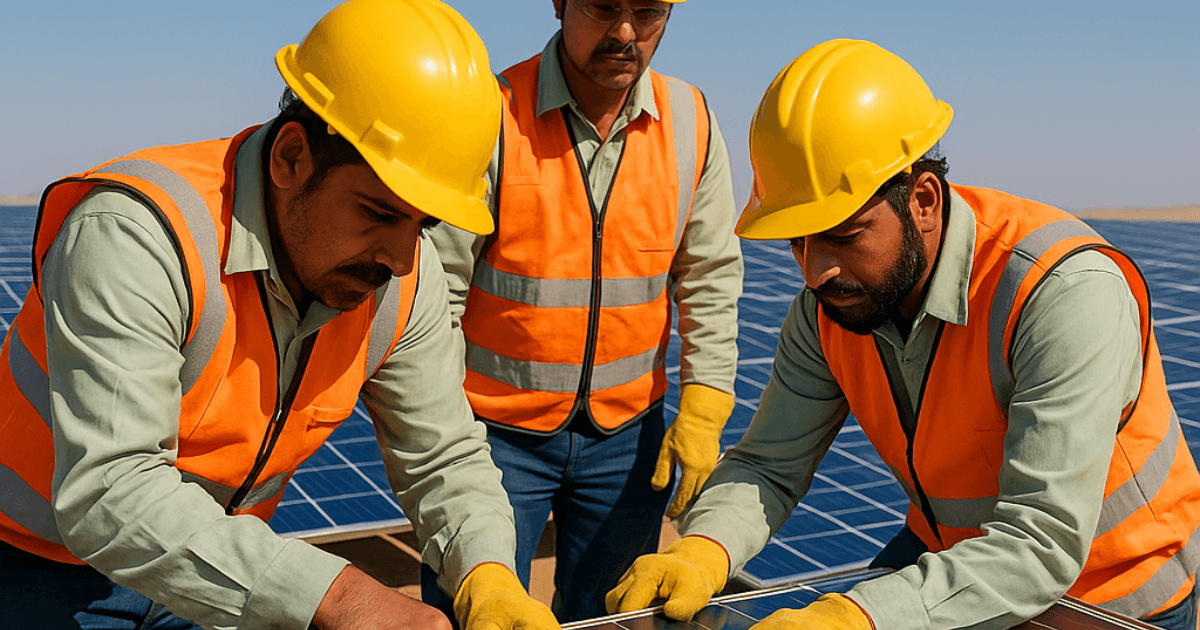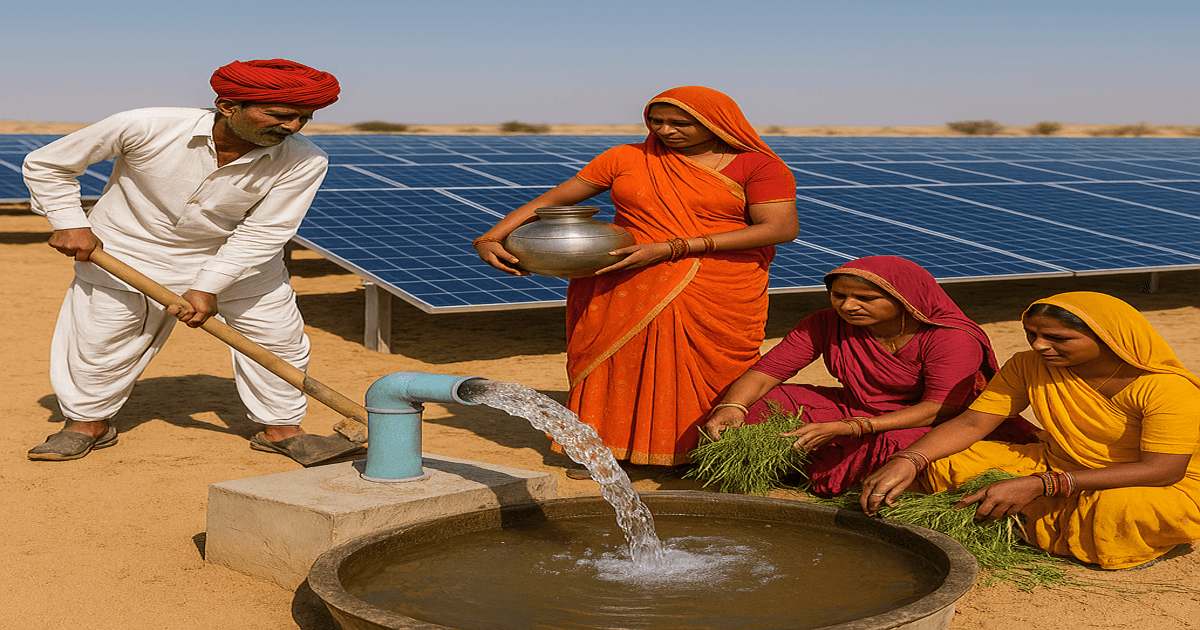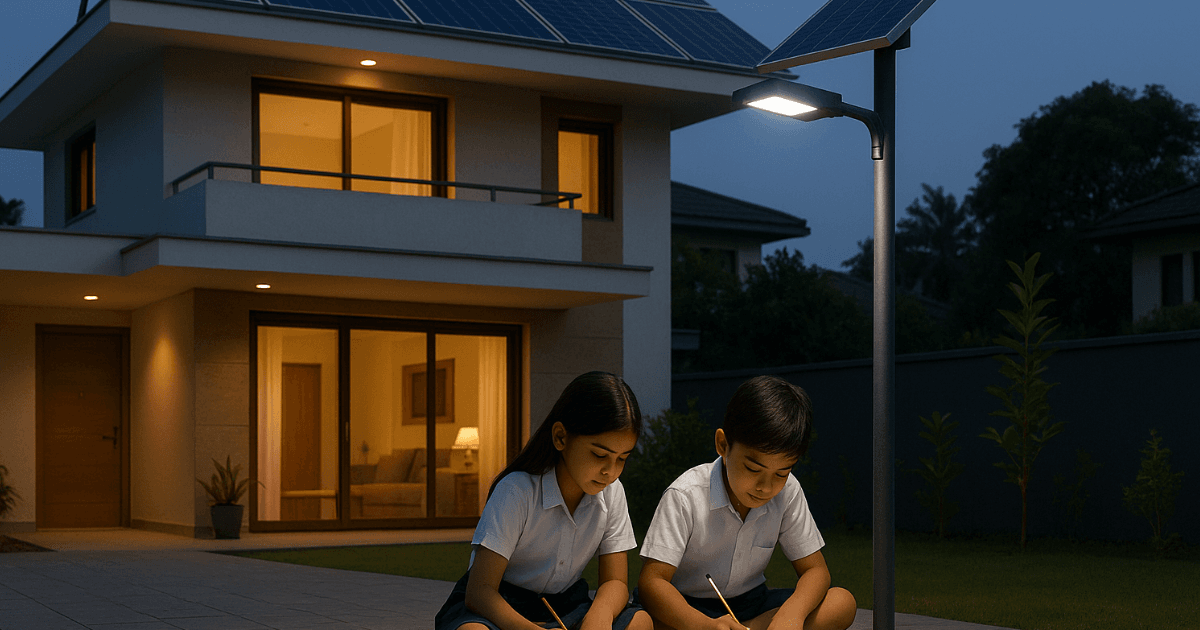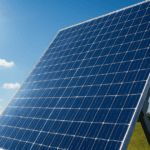
How Bhadla Village Became India’s Solar Superpower: A Story of Transformation Through Renewable Energy
In the heart of Rajasthan’s scorching Thar Desert lies Bhadla, a once-sleepy village that few had heard of—until it became the epicenter of one of the world’s largest solar power projects. What was once barren, sunburnt land with extreme temperatures and minimal vegetation has now transformed into India’s solar superpower, showcasing the true potential of sustainable development.

This is not just the story of a village—it’s a story of how vision, policy, and clean technology can together light up the path toward a brighter, greener future.
From Dust to Development: The Rise of Bhadla Solar Park
Ten years back, Bhadla was renowned for its extreme climatic conditions, with temperatures rising above 50 degrees Celsius during the peak summer. The place was barren for agriculture. But the ones that put out their necks were welcomed when the government tapped this region’s potential for solar energy.
 The Bhadla Solar Park, spread over 14,000 acres, was established through joint efforts from the Rajasthan Renewable Energy Corporation Limited (RRECL) and private companies. With an installed capacity of over 2,245 MW, the park today powers millions of homes across India, including urban centers like Delhi and Dehradun.
The Bhadla Solar Park, spread over 14,000 acres, was established through joint efforts from the Rajasthan Renewable Energy Corporation Limited (RRECL) and private companies. With an installed capacity of over 2,245 MW, the park today powers millions of homes across India, including urban centers like Delhi and Dehradun.
Why Bhadla? The Ideal Solar Hotspot
What made Bhadla the perfect location?
- High Solar Irradiance: Bhadla receives around 320 sunny days annually, making it a prime spot for solar energy generation.
- Availability of Vast Unused Land: The village had long stretched of wasteland that imposed slight land-use or displacement conflicts.
- Government Support: Clear policy frameworks, investor-friendly models, and speedy clearances helped accelerate the project.
These factors, combined with the falling costs of solar panels and increasing climate awareness, made Bhadla a no-brainer for renewable energy planners.
Socio-Economic Transformation: Beyond Just Power
The impact of the solar revolution in Bhadla can be seen far beyond electricity. Locals who were once unemployed or dependent on low-income jobs are now employed in plant operations, security, maintenance, and logistics work. Women have particularly benefited from training and participation in self-help groups aimed at solar-based livelihoods.
With better infrastructure—roads, electricity, and communications—the general standard of living has improved. Solar energy did not only light up homes; it brought empowerment.

With success shining brightly in Bhadla, the bigger question is: What does this mean for India’s renewable energy future?
What Bhadla Means for India’s Renewable Future
Ambitious targets for clean energy have been set for India: 500 GW of non-fossil fuel capacity by 2030. The successful run of Bhadla carries a great message: renewable energy is not only feasible but also scalable and transformative.
 From Dehradun to Delhi, an awareness on sustainable energy solutions is beginning to rise, with more citizens and businesses opting for solar rooftops and smart grids. Bhadla stands as the template for what can be replicated in other states—clean energy that powers both economy and environment.
From Dehradun to Delhi, an awareness on sustainable energy solutions is beginning to rise, with more citizens and businesses opting for solar rooftops and smart grids. Bhadla stands as the template for what can be replicated in other states—clean energy that powers both economy and environment.
Role of Private Companies: Powering the Transition
Bhadla, it would seem, wouldn’t have been transformed without the efforts of the private players in the solar energy sector.
Poornta X Renewable is a growing name among them, bringing a commitment to cost-effective, reliable, and scalable solar solutions to businesses and homes across Dehradun, Delhi, and Northern India. From the preliminaries of consultation to seamless installation and after-service support, they ensure that sustainable energy is not just a capal in the sky for every Indian household and enterprise but an achievable goal.
However, the impact of Bhadla’s solar revolution doesn’t stop at India’s borders—it echoes across the globe.
The Global Message: Lessons from Bhadla
The Bhadla story isn’t just India’s story—it’s the worlds. In an era of climate change and rising energy demands, this solar success proves that the shift toward sustainable energy is not only necessary but also profitable and inclusive.
Key takeaways from Bhadla’s journey include:
- Government-private sector synergy is crucial.
- Unused land can be repurposed for energy generation.
- Local communities must be made stakeholders.
- Investment in renewables is investment in the future.
The Road Ahead: Lighting Every Corner
As we look ahead, the goal is to replicate the Bhadla model across other sun-rich but underdeveloped regions. With increasing support for green energy and rising electricity demands, the solar sector is poised to grow exponentially.
And while Bhadla set the benchmark, the solar wave is now reaching homes, schools, hospitals, and industries—transforming energy use everywhere, regardless of size.
Conclusion
Bhadla’s transformation from a deserted landscape to a renewable energy powerhouse is an inspiring tale of vision, action, and perseverance. It shows that with the right mix of policy, innovation, and people-centric approaches, any region—no matter how remote—can become a beacon of sustainable progress.
Whether you live in a bustling city like Delhi or a peaceful town like Dehradun, now is the time to think solar.









